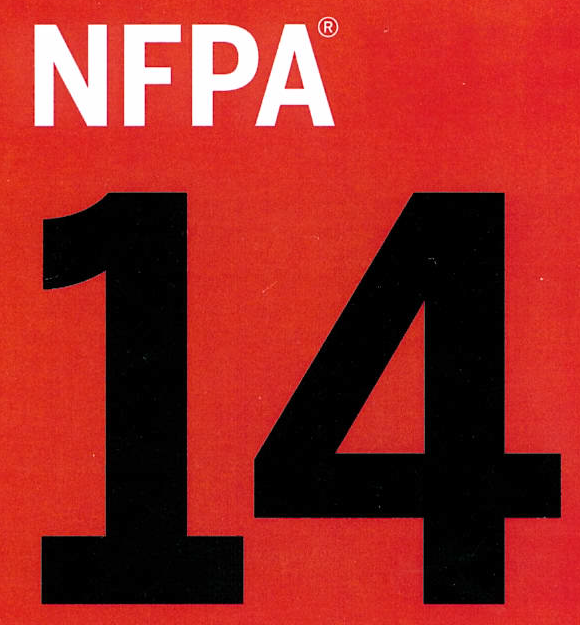Nitrogen Inerting
Is Good – But Cannot Prevent All Forms of Corrosion In
Dry And Pre-Action Fire Protection Systems
By Daniel H. Pope, Ph.D.
Abstract: Nitrogen “inerting” is an important component of a corrosion control program in dry and pre-action fire protection systems (FPS). However, it cannot prevent all forms of corrosion all of the time, for reasons discussed in this article.
Recent publications 1, 2 and commercial literature (for example see NFPA Journal July/August 2016) have advocated the use of nitrogen inerting (NI) to treat all forms of corrosion in dry and pre-action fire protection systems (FPS).
While I have long advocated the use of nitrogen as part of corrosion prevention and treatment programs, I have never advocated using NI alone to prevent all forms of corrosion in dry and pre-action FPS for the following reasons.
First, severe under-deposit pitting corrosion in dry and pre-action FPS occurs on pipe surfaces in contact with trapped water, including those in undrained low points, in puddles of water adjacent to fittings in the FPS, and in portions of branch lines and drops. Water can be trapped in these locations because, prior to NFPA 13, 2016 edition, FPS were allowed non-pitched components in zones not susceptible to freezing. In some cases, tests for water at low point drains were done by opening the low point drain. When no water came out — sometimes due to the fact that the drains were plugged — it was concluded that the FPS was free of water when, in fact, the pipes may have been up to half-full of water. Plugging is often caused by microbial slimes and subsequent formation of solid materials in the drains. Water left in the FPS contained oxygen and concentrated microbes, nutrients, and salts — ingredients that allowed rapid and sustained under-deposit pitting, including microbiologically influenced corrosion (MIC), to occur.
Second, physical chemistry principles tell us that migration of all oxygen from the FPS by flowing nitrogen over the trapped waters is a slow process. In fact, some NI suppliers say the process requires days to weeks to reach a satisfactory level. Also, this expensive and time-consuming process must be repeated each time the FPS is tested or accidentally tripped.
Third, testing for nitrogen purity or oxygen concentration in gases exiting the exhaust valve does not measure the amount of oxygen in waters in the FPS. Undetected oxygen in the water, under pressure, will allow pitting to continue at rapid rates.
Fourth, nitrogen inerting does not kill MIC-related microbes (MRM) or inhibit microbial activities that occur under anaerobic (little or no oxygen) conditions. These include acid production, which promotes pitting, and conversion of nitrogen to organic compounds, which are used by microbes for further growth3. Also, nitrogen does not remove alternative electron acceptors (e.g., nitrate, sulfate, and ferric iron) from the FPS. These chemicals can allow microbial activities to continue in the absence of oxygen. Therefore, killing all MRM is essential to stopping all forms of corrosion in the FPS.
Fifth, NI requires equipment and labor whose costs are high compared to the cost of simple chemical treatments known to quickly kill all MRM, remove all oxygen, provide a reservoir of chemical in the water to intercept and remove any oxygen subsequently entering the FPS, and thereby prevent/stop all forms of corrosion4, 5. Therefore, a better approach is to treat all waters entering the FPS with such a chemical, then flush the FPS with nitrogen (T-size tanks of nitrogen would suffice for most FPS because it is only used to remove MOST oxygen from the interior of the pipes), and leave nitrogen as the supervisory gas for the FPS. Repeating these steps after system tests or accidental tripping of the FPS is also quick, easy, and inexpensive. In our experience, dry/pre-action FPS that have been appropriately treated with biocide/oxygen scavenger, with or without NI, had no further corrosion of any type. On the other hand, a number of cases where nitrogen inerting alone was employed, the FPS continued to have under-deposit pitting and leaks.
Sixth, tests for corrosion recommended by NI suppliers often require installation of a special apparatus and power supply and use of corrosion probes or installation of corrosion coupons. While these may provide some measure of generalized corrosion, they do not accurately measure localized pitting corrosion. Also, probes and coupons are often placed in locations that do not accurately represent worst-case conditions in the FPS piping. In addition, coupons must be sent to, and evaluated by, experts to determine pitting rates — an additional expense and delay in getting results.
In contrast, chemically treated FPS are simply and inexpensively tested for corrosion control by testing waters in the FPS for oxygen, MRM, iron, and residual treatment chemical. All tests can be done on site by maintenance or FPC personnel in less than 30 minutes. Results are immediately available (with the exception of MRM results, which are available in one to five days). Also, these tests can be done at any location in the FPS, as needed.
Conclusions:
While using nitrogen inerting alone won’t prevent all forms of corrosion in dry/pre-action FPS, it can be used with chemical(s) that kill microbes and consume oxygen, to quickly, inexpensively, and comprehensively control all forms of corrosion.
About the Author:
Daniel H. Pope, Ph.D., is a microbiologist who has helped over a thousand clients to accurately diagnose and effectively treat corrosion problems, including MIC, for over 35 years. He has concentrated on detection and control of corrosion in FPS for the last 20+ years using innovative (some patented), economical, and time-saving solutions tailored to a specific site’s needs. Dr. Pope has also served as expert witness in many legal cases.
He is President of Bioindustrial Technologies, Inc. (BTI), and may be contacted at: services@bti-labs.com.
References
1. Tihen, J. “Corrosion Inhibition of Dry and Pre-Action Fire Suppression Systems Using Nitrogen Gas.” Fire Protection Contractor. Jan. 2014
2. Kochelek, J. “Industry Myths Regarding Corrosion in Fire Sprinkler Systems.” Fire Protection Contractor. Jan, 2014.
3. O’Leary, T. “Understanding Nitrogen and Its Effect on Dissolved Oxygen in Water.” Fire Protection Contractor. March, 2015.
4. Pope, D.H. and J. Lovell. “Fundamentals of Microbiologically Influenced Corrosion (MIC) in Water-Based Fire Protection Sprinkler Systems Part 1.” Fire Protection Contractor. January, 2014.
5. Pope, D.H. and J. Lovell. “Fundamentals of Microbiologically Influenced Corrosion (MIC) in Water-Based Fire Protection Sprinkler Systems Part 2.” Fire Protection Contractor. March, 2014.
Reprinted from Fire Protection Contractor magazine, September 2016, http://fpcmag.com


